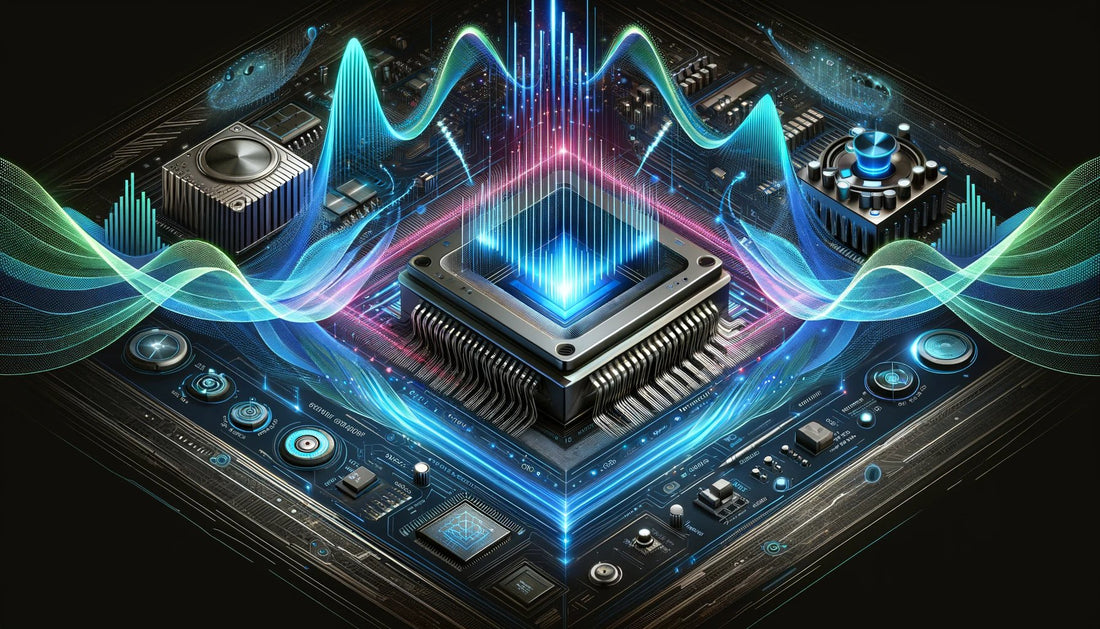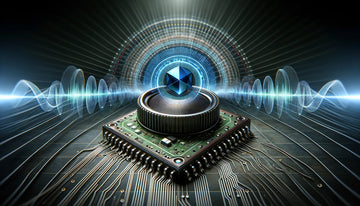
Improving Audio with DSP: Essential Techniques for Success
In today's digital age, audio quality has become increasingly important. Whether listening to music, watching a movie, or attending a virtual meeting, we are improving audio with DSP for clear, crisp sound that enhances our overall experience. This is where digital signal processing (DSP) comes into play. DSP technology has revolutionized audio enhancement, providing precise control over sound quality, frequency response, and audio fidelity.
This blog will explore improving audio with DSP and how it can significantly improve the audio experience in various scenarios. So, let's dive in and discover how DSP can take your audio to the next level.
Harness the maximum potential of your car's audio system. Learn more about DSP Amplifiers today.
Understanding the Role of DSP in Audio Enhancement
Digital signal processing (DSP) plays a crucial role in audio enhancement, providing high-quality sound reproduction. Whether music, movies, or even car audio systems, DSP technology is behind the scenes, optimizing the audio signal and ensuring an immersive listening experience. By manipulating the digital audio data, DSP algorithms can enhance audio quality, improve frequency response, and deliver precise control over sound output. Let's explore the transition from analog to digital audio processing and understand the critical components of DSP technology in audio enhancement.
The Transition from Analog to Digital Audio Processing
The transition from analog to digital audio signal processing marks a pivotal shift in the audio industry. Analog audio signals were susceptible to noise and distortion, compromising sound reproduction. With digital signal processing, audio data is converted into digital form, allowing for more precise control over sound output and manipulation. Digital audio technology uses binary data to represent sound, producing accurate sound reproduction. This digital data allows for better sound quality, dynamic range, and a superior listening experience. The digital signal processor, the heart of DSP technology, has transformed audio data, revolutionizing sound reproduction and ultimately redefining audio quality.
The Key Components of DSP in Audio Technology
The critical components of digital signal processing (DSP) technology are the digital signal itself and the signal processing algorithms. The digital signal represents audio data, which is then processed using algorithms to optimize sound quality and frequency response. DSP systems manipulate the digital audio signal, applying algorithms to enhance various aspects of sound reproduction. These algorithms precisely control parameters such as equalization, time alignment, compression, distortion, etc. Additionally, DSP technology allows for integrating additional audio effects, enabling sound engineers and music producers to create unique audio experiences. With the advancements in DSP technology, audio data can be processed and optimized with unparalleled precision, resulting in high-quality sound output and an immersive audio experience.
The Technical Aspects of DSP in Audio
Now that we understand the role of DSP in audio enhancement let's delve into the technical aspects of digital signal processing. DSP involves the manipulation of the audio signal, frequency response, and sound output using digital signal processors (DSPs). These processors use algorithms to analyze and process digital audio data, optimizing it for precise control over audio quality, sound reproduction, and frequency range. DSP technology ensures accurate time alignment, equalization, and crossovers, enhancing the audio experience and delivering high frequencies precisely. Let's explore the specific techniques that make DSP invaluable in audio enhancement.
Time Alignment and its Role in Audio Enhancement
Time alignment is crucial in audio enhancement, particularly for stereo speakers. It involves precise control over when sound reaches the listener, ensuring optimal synchronization between the speakers. DSP technology advances time alignment, delivering a more accurate sound stage, improved stereo imaging, and enhanced audio quality. By aligning sound output from each speaker, time alignment optimizes the listening experience and minimizes audio artifacts. This technique is essential in-car audio systems, where speakers are often positioned differently, and accurate time alignment ensures an immersive audio experience. With DSP technology, sound reproduction is finely tuned, providing a precise audio output that optimizes audio fidelity and clarity.
The Importance of Equalization (EQ) in DSP
Equalization, commonly known as EQ, is a fundamental digital signal processing component. EQ allows for precise control over the frequency response of audio signals, enabling sound engineers and audio enthusiasts to optimize audio quality. DSP technology has advanced equalization, providing precise control over the frequency range, audio signal, and sound reproduction. Equalization allows for enhancing or reducing specific frequencies, resulting in a more balanced audio experience. By adjusting the frequency response, DSP technology can compensate for room acoustics, speaker characteristics, and personal preferences, ensuring accurate sound reproduction and an enjoyable listening experience.
The Function of Crossovers in DSP
Crossovers play a vital role in audio enhancement, particularly in systems that utilize multiple speakers. A crossover is a device or circuit separating audio signals into different frequency ranges, ensuring each speaker receives the appropriate frequencies for optimal sound reproduction. DSP technology advances crossovers, providing precise control over the frequency response and dynamic range. Crossovers can optimize sound quality using digital signal processing algorithms, improving the overall audio experience. Whether separating high frequencies for tweeters or delivering precise bass response, DSP-based crossovers ensure accurate sound reproduction, allowing each speaker to perform at its best.
DSP Applications in Different Audio Scenarios
Understanding the applications of digital signal processing (DSP) in various audio scenarios is essential for maximizing audio quality and sound reproduction. DSP technology has revolutionized audio enhancement, providing precise control over audio parameters in different environments. DSP is crucial in optimizing sound reproduction, whether it's active noise cancellation, volume management, or music production.
DSP in Active Noise Cancellation
Active noise cancellation (ANC) technology utilizes DSP processors to reduce background noise and improve the audio experience. By analyzing the audio signal captured by microphones, DSP algorithms generate an inverted sound wave that cancels out the background noise, allowing listeners to enjoy their audio content without distractions. DSP advancements in active noise cancellation have significantly reduced noise, leading to superior audio quality and enhanced sound fidelity.
The Role of DSP
Volume management is crucial for audio enhancement. DSP technology provides precise control over volume levels, ensuring balanced sound and preventing distortion. It optimizes the dynamic range, minimizing audio artifacts and delivering high-quality sound. With advancements in digital signal processing, volume management has become efficient, enhancing audio fidelity.
The Contribution of DSP
DSP has revolutionized music production by enhancing sound quality and enabling precise manipulation of audio data.
Choosing the Right DSP for Optimal Audio Performance
The correct digital signal processing (DSP) technology is crucial for achieving optimal audio performance and sound quality. With an abundance of DSP systems and processors available in the market, selecting the right one can be daunting. However, by considering certain factors, you can make an informed decision that aligns with your audio enhancement goals.
Factors to Consider When Selecting a DSP
When selecting a digital signal processing (DSP) system, there are several factors to consider to ensure optimal audio performance and sound quality:
- DSP systems functionality: Evaluate the functionality of the DSP system, ensuring it meets your audio enhancement requirements.
- Digital signal fidelity: Look for DSP processors that provide high audio fidelity, producing accurate sound reproduction.
- Compatibility with audio devices: Ensure the DSP system is compatible with your audio devices, such as speakers, headphones, or car audio systems.
- Ease of setup and parameters control: Consider the ease of setup and control over parameters, as this will affect your ability to fine-tune audio quality with the DSP system.
Brands Known for High-Quality DSPs
Regarding digital signal processing (DSP), several brands are known for their high-quality DSP processors, delivering exceptional audio performance. These brands have established themselves in the audio industry, continuously pushing the boundaries of sound reproduction, fidelity, and control. Some renowned brands that offer high-quality DSP solutions include:
- Goldhorn: Known for its digital sound processors, this brand offers precise control over audio parameters, ensuring optimal audio performance.
- Rainbow Audio: This brand has built a reputation for its advanced DSP systems, delivering top-notch sound quality and audio fidelity.
- Eton Audio: Renowned for its DSP processors, this brand provides innovative audio enhancement solutions, elevating the listening experience to new heights.
Tuning Your DSP
To achieve optimal sound quality with your digital signal processing (DSP) system, effective tuning is essential. Fine-tuning your DSP parameters allows precise control over sound reproduction, frequency response, and audio quality. Adjusting parameters such as equalization, time alignment, crossovers, and dynamic range compression optimizes them to your audio setup and preferences. By calibrating your DSP system carefully, you can maximize sound quality, enhance audio fidelity, and create an immersive listening experience.
The Future of DSP in Audio Technology
As technology advances and digital sound becomes more pervasive, the future of digital signal processing (DSP) in audio technology looks promising. DSP algorithms continue to evolve, offering innovative advancements in sound reproduction, audio effects, and audio fidelity.
Latest Innovations in DSP Technology
Digital signal processing (DSP) technology is advancing rapidly, introducing innovative algorithms and advancements revolutionizing audio enhancement. Researchers and engineers constantly develop new techniques to improve sound reproduction, audio fidelity, and sound quality. Some of the latest innovations in DSP technology include:
- Advanced algorithms that provide more precise control over audio parameters, sound effects, and audio fidelity.
- Advancements in DSP processors: Dedicated DSP processors with increased processing power, allowing for higher-quality audio processing and sound reproduction.
- Integration with emerging technologies: Integration of DSP technology with emerging technologies such as artificial intelligence, virtual reality, and augmented reality, enabling immersive audio experiences and enhanced sound quality.
The Impact of DSP on Future Audio Developments
Digital signal processing (DSP) continues to impact future audio developments significantly. DSP algorithms play a crucial role in shaping the audio industry, driving innovation, and redefining audio quality as technology advances. The ability to precisely manipulate digital audio data opens up endless possibilities for sound reproduction, audio effects, and audio fidelity. As technology advances, we can expect further signal processing, audio quality, and sound reproduction improvements.
Does DSP Affect the Overall Audio Quality?
DSP technology plays a crucial role in shaping audio quality and sound fidelity. Through effective digital signal processing, audio quality output can be directly influenced. Understanding the impact of DSP on audio quality is essential for optimizing sound. Maximizing DSP functionality and implementing suitable systems can achieve superior audio quality and fidelity.
Conclusion
In conclusion, DSP plays a crucial role in audio enhancement, transforming how we experience sound. We've explored this technology's various applications and benefits from the transition from analog to digital audio processing to the technical aspects of DSP, such as time alignment, equalization, and crossovers. It is essential to select the proper DSP and tune it for optimal audio performance to achieve the best sound quality.
DSP continues to evolve as we look towards the future, with ongoing innovations shaping the audio industry. Rest assured, DSP does not compromise the overall audio quality but enhances it, allowing us to enjoy a more immersive and pristine audio experience. So embrace the power of DSP and take your audio to new heights.

















